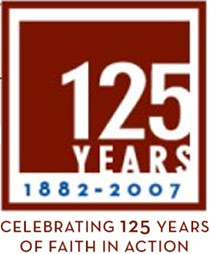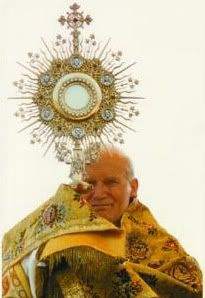The Feast of the Chair of St. Peter
 The Feast of the Chair of St. Peter celebrates, well, St. Peter's chair. The celebration apparently dates to two earlier celebrations, one on the 22nd of February and another on the 18th of January. The latter commemorated Peter's first Mass in Rome, while the second celebrated his arrival in Rome and the ascension to its See (although later manuscripts indicate that it was St. Peter's temporary apostolate in Antioch being celebrated, this does not fit with the original descriptions). The Calendar of Philocalus indicates that the February 22nd feast was celebrated as far back as 311.
The Feast of the Chair of St. Peter celebrates, well, St. Peter's chair. The celebration apparently dates to two earlier celebrations, one on the 22nd of February and another on the 18th of January. The latter commemorated Peter's first Mass in Rome, while the second celebrated his arrival in Rome and the ascension to its See (although later manuscripts indicate that it was St. Peter's temporary apostolate in Antioch being celebrated, this does not fit with the original descriptions). The Calendar of Philocalus indicates that the February 22nd feast was celebrated as far back as 311. The early Roman Church, then, celebrated the two feasts as the first and second ascensions of the episcopal seat by St. Peter, it seems. It has been inferred by scholars that the first Pope was absent from the city for a time, and that the second feast (not necessarily the February feast) marks his return. These celebrations were held in two places, each holding a chair that had been used by the apostle himself in presiding over the faithful. The first of these resided in the Vatican Basillica's baptismal chapel, and the second in a cemetary on the Via Salaria. St. Ennodius of Pavia indicates that St. Peter sat upon the Vatican chair while confirming catachumens. The second was situated in an oratory above the catacombs, but was destroyed by one of the various pillagers by the 6th or 7th century. The destruction of the chair itself, the premier object of devotion, obviously had a negative impact on the observation of the Via Salaria feast, and it "drifted away" to Antioch.
The "second" (and now only) sedia remained in the Vatican, and continued to be an object of great devotion, being displayed anually to the faithful. Prior to the Avignon Papacy, the Pope himself would be enthroned upon the chair upon his election. During the early middle ages, perhaps in the 9th century, the chair was embellished and supplemented, probably to decorate and preserve the chair itself, and to facilitate the enthroning practice of the time. Acacia wood was added to the chair's frame to strengthen it, and this was inlaid with pieces of ivory. The ivory was embellished by depictions of mythical beasts, the Herculean feats, various designs, and Charles the Bald. Now, let's stop a moment. Charles the Bald is apparently very underrated in history: what sort of guy gets his picture engraved on the Chair of St. Peter? If you're ever looking for a powerful job with good benefits, I suggest "King of the Franks."
Alexander VII had the chair encased in bronze for preservation by Bernini in the 1660s. The artist designed and built the spectacularly beautiful side altar in St. Peter's for the veneration of the chair. The relic is supported by four doctors of the Church (St. Ambrose, St. Augustine, St. Athanasius, and St. Chrysostom). Bl. Pius IX opened the reliquary in 1867 for the 1800th anniversary of the martyrdoms of Peter and Paul, and the chair was again displayed for public veneration. Since then, the chair appears to have gone back into its bronze container.
The Golden Legend recounts the chairing of St. Peter, the event of today's solemnity.
A Protestant friend of mine remarked, not too long ago, in regards to the papacy, "I don't see the word 'Rome' [in this context] anywhere in the Bible." Well, my friends, welcome to the world of the Apostolic Church. Today we celebrate Tradition, the veneration of Rome as the Holy City because St. Peter deigned that it be so. Whatsoever you bind on earth shall be bound in Heaven, and whatosever you loose on earth shall be loosed in Heaven. Long live the Pope!
File Under: The_Pope, Catholic_Stuff, Saints








1 Comments:
So what do they call that one book of the New Testament? St. Paul's Epistle to the Barcelonans?
Post a Comment
<< Home